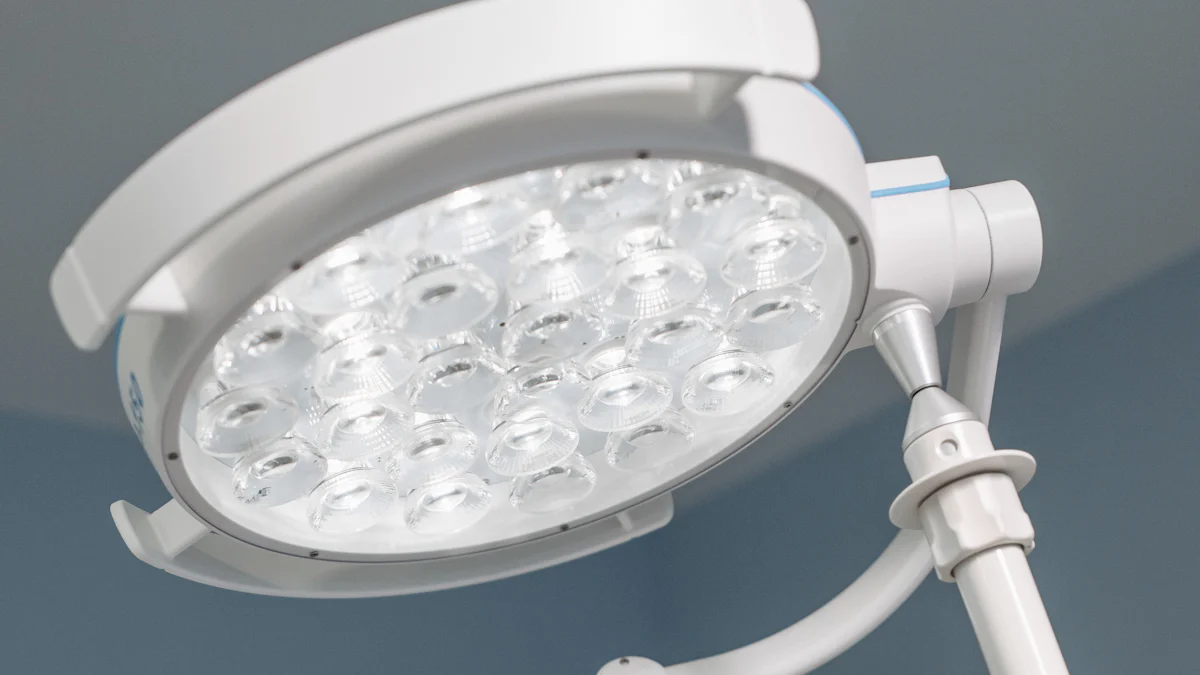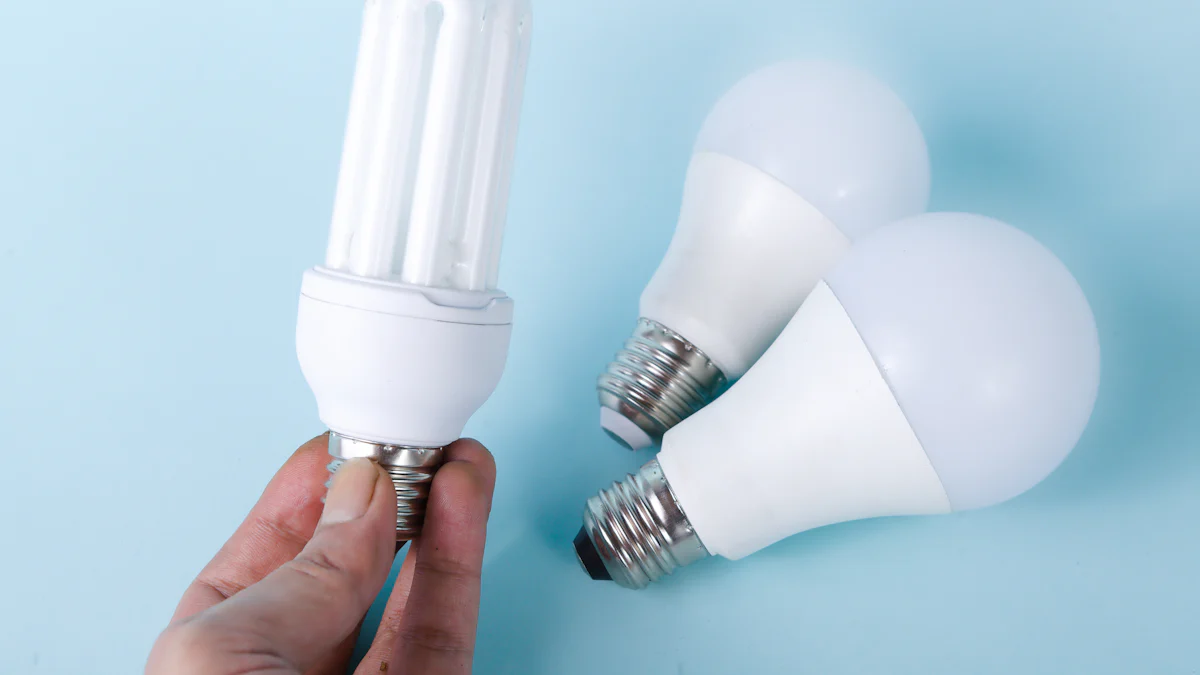
Work lights play a crucial role in various tasks, providing essential illumination for both professional and DIY projects. Among the available options, LED work lights and halogen work lights stand out as the primary choices. Each type offers unique advantages and disadvantages. The purpose of this blog is to compare LED work lights and halogen work lights to help readers make an informed decision.
Energy Efficiency

LED Work Lights
Power Consumption
LED work lights consume significantly less electricity compared to halogen lights. LEDs convert almost all their electrical energy into visible light, minimizing wasted energy as heat. This efficiency allows LED work lights to operate at up to 90% energy efficiency, providing more light and less heat.
Energy Savings Over Time
LED work lights offer substantial cost savings over time. These lights can save up to 80% on electricity bills due to their high energy efficiency. Additionally, LED work lights have a longer lifespan, lasting up to 50,000 hours compared to 500 hours for halogen lights. This extended lifespan reduces the frequency of replacements, further contributing to long-term savings.
Halogen Work Lights
Power Consumption
Halogen work lights consume more electricity than LED lights. Halogen bulbs convert a significant portion of electrical energy into heat rather than light. This inefficiency results in higher energy consumption and increased operating costs.
Energy Usage Over Time
Over time, halogen work lights incur higher energy expenses. The lower energy efficiency of halogen bulbs leads to increased electricity usage. Frequent replacements due to shorter lifespans (around 500 hours) also add to the overall cost of using halogen lights.
Comparative Analysis
Long-term Cost Implications
LED work lights offer better long-term cost implications compared to halogen lights. The higher initial purchase price of LED lights is offset by the substantial energy savings and reduced maintenance costs over time. Users can expect to save significantly on electricity bills and replacement costs with LED work lights.
Environmental Impact
The environmental impact of LED work lights is considerably lower than that of halogen lights. LEDs’ high energy efficiency means less energy consumption and reduced greenhouse gas emissions. Additionally, the longer lifespan of LED work lights results in fewer waste products, making them a more environmentally friendly option.
Brightness
LED Work Lights
Lumens Output
LED work lights deliver impressive brightness levels. The lumens output of LED work lights often surpasses that of halogen lights. This high lumens output ensures that LED work lights provide ample illumination for various tasks. Users can rely on the consistent brightness of LED work lights for both indoor and outdoor projects.
Light Quality
The light quality of LED work lights remains superior. LEDs produce a bright, white light that closely resembles natural daylight. This quality enhances visibility and reduces eye strain. Furthermore, LED work lights offer better color rendering, allowing users to see colors more accurately. This feature proves beneficial in tasks requiring precision and attention to detail.
Halogen Work Lights
Lumens Output
Halogen work lights also provide high lumens output. However, halogen bulbs tend to lose brightness over time. The initial brightness of halogen work lights may be satisfactory, but the gradual dimming can affect performance. Users may need to replace halogen bulbs more frequently to maintain optimal brightness levels.
Light Quality
The light quality of halogen work lights differs from LEDs. Halogen bulbs emit a warm, yellowish light. This type of light can create a cozy atmosphere but may not be ideal for tasks requiring high visibility. Additionally, halogen work lights generate more heat, which can cause discomfort during prolonged use.
Comparative Analysis
Suitability for Different Tasks
LED work lights prove more suitable for a wide range of tasks. The high lumens output and superior light quality make LED work lights ideal for detailed work. Users can benefit from the consistent brightness and accurate color rendering. In contrast, halogen work lights may be better suited for tasks where warmth and ambiance are more important than precision.
User Preferences
User preferences often lean towards LED work lights. The advantages of energy efficiency, long lifespan, and better light quality make LED work lights a popular choice. However, some users may prefer the warm light of halogen work lights for specific applications. Ultimately, the choice depends on individual needs and the nature of the tasks at hand.
Cost
Initial Purchase Price
LED Work Lights
LED work lights often come with a higher initial purchase price. The advanced technology and materials used in LED work lights contribute to this cost. However, the investment in LED work lights can be justified by their long-term benefits.
Halogen Work Lights
Halogen work lights generally have a lower initial purchase price. The simpler technology and materials make halogen work lights more affordable upfront. This lower cost can appeal to users with a limited budget or those needing a temporary solution.
Long-term Operating Costs
LED Work Lights
LED work lights offer significant savings in long-term operating costs. The high energy efficiency of LED work lights reduces electricity bills by up to 80%. Additionally, the extended lifespan of LED work lights minimizes the need for frequent replacements. These factors make LED work lights a cost-effective choice over time.
Halogen Work Lights
Halogen work lights incur higher long-term operating costs. The lower energy efficiency of halogen work lights results in increased electricity consumption. Frequent bulb replacements due to shorter lifespans also add to the overall expense. Users may find that the initial savings on halogen work lights are offset by these ongoing costs.
Comparative Analysis
Total Cost of Ownership
The total cost of ownership for LED work lights proves more economical compared to halogen work lights. Despite the higher upfront cost, LED work lights save money through reduced energy bills and fewer replacements. Over time, the investment in LED work lights pays off, making them a financially sound option.
Value for Money
LED work lights provide better value for money. The combination of energy efficiency, long lifespan, and superior performance justifies the higher initial cost. Users can expect reliable and consistent illumination from LED work lights. In contrast, halogen work lights may appear cheaper initially but can lead to higher expenses in the long run.
Durability

LED Work Lights
Lifespan
LED work lights offer an impressive lifespan. These lights can last up to 50,000 hours. This longevity reduces the need for frequent replacements. Users benefit from consistent performance over extended periods.
Resistance to Damage
LED work lights exhibit high resistance to damage. The solid-state construction of LEDs makes them durable. These lights withstand shocks and vibrations. This durability proves beneficial in demanding work environments.
Halogen Work Lights
Lifespan
Halogen work lights have a shorter lifespan. These lights typically last around 500 hours. Frequent replacements become necessary. This shorter lifespan increases maintenance efforts.
Resistance to Damage
Halogen work lights show less resistance to damage. The fragile filament inside halogen bulbs is prone to breaking. This vulnerability makes halogen lights less suitable for rough conditions. Users must handle these lights with care.
Comparative Analysis
Performance in Harsh Conditions
LED work lights perform better in harsh conditions. The robust design of LEDs ensures reliability. These lights operate effectively in extreme temperatures. Halogen work lights struggle in such environments. The heat generated by halogen bulbs can cause failures.
Maintenance Requirements
LED work lights require minimal maintenance. The long lifespan of LEDs reduces the need for frequent replacements. Users save time and effort on upkeep. Halogen work lights demand more maintenance. The shorter lifespan and delicate nature of halogen bulbs necessitate regular attention. This increased maintenance can disrupt workflow.
Additional Considerations
Heat Emission
LED Work Lights
LED work lights emit minimal heat. The design of LEDs ensures that most energy converts into light rather than heat. This low heat emission enhances safety and comfort during prolonged use. Users can handle LED work lights without the risk of burns.
Halogen Work Lights
Halogen work lights generate significant heat. The bulbs convert a large portion of energy into heat, making them hot to the touch. This high heat emission increases the risk of burns and fire hazards. Users must exercise caution when handling halogen work lights.
Safety
LED Work Lights
LED work lights offer superior safety features. The low heat emission reduces the risk of burns and fire. Additionally, LEDs contain no hazardous materials, such as mercury. This absence of toxic substances makes LED work lights safer for both users and the environment.
Halogen Work Lights
Halogen work lights pose several safety concerns. The high heat emission can cause burns and increase fire risks. Halogen bulbs also contain materials that can be hazardous if broken. Users need to handle halogen work lights with care to avoid accidents.
Environmental Impact
LED Work Lights
LED work lights have a positive environmental impact. The high energy efficiency of LEDs results in lower energy consumption. This efficiency reduces greenhouse gas emissions. Additionally, the long lifespan of LED work lights means fewer replacements and less waste. LEDs contain no hazardous materials, making disposal safer for the environment.
Halogen Work Lights
Halogen work lights have a more negative environmental impact. The lower energy efficiency leads to higher energy consumption and increased greenhouse gas emissions. The shorter lifespan of halogen bulbs results in more frequent replacements and greater waste. Halogen bulbs may contain materials that pose environmental hazards when disposed of improperly.
The comparison between LED work lights and halogen work lights reveals several key points. LED work lights excel in energy efficiency, long-term cost savings, and durability. Halogen lights offer lower initial costs but result in higher energy consumption and frequent replacements.
LED work lights prove ideal for tasks requiring high visibility and precision. Halogen lights suit applications needing a warmer ambiance.
Based on the analysis, LED work lights provide better value for money and performance. Users should consider specific needs and preferences when choosing between LED work lights and halogen options.
Post time: Jul-09-2024
